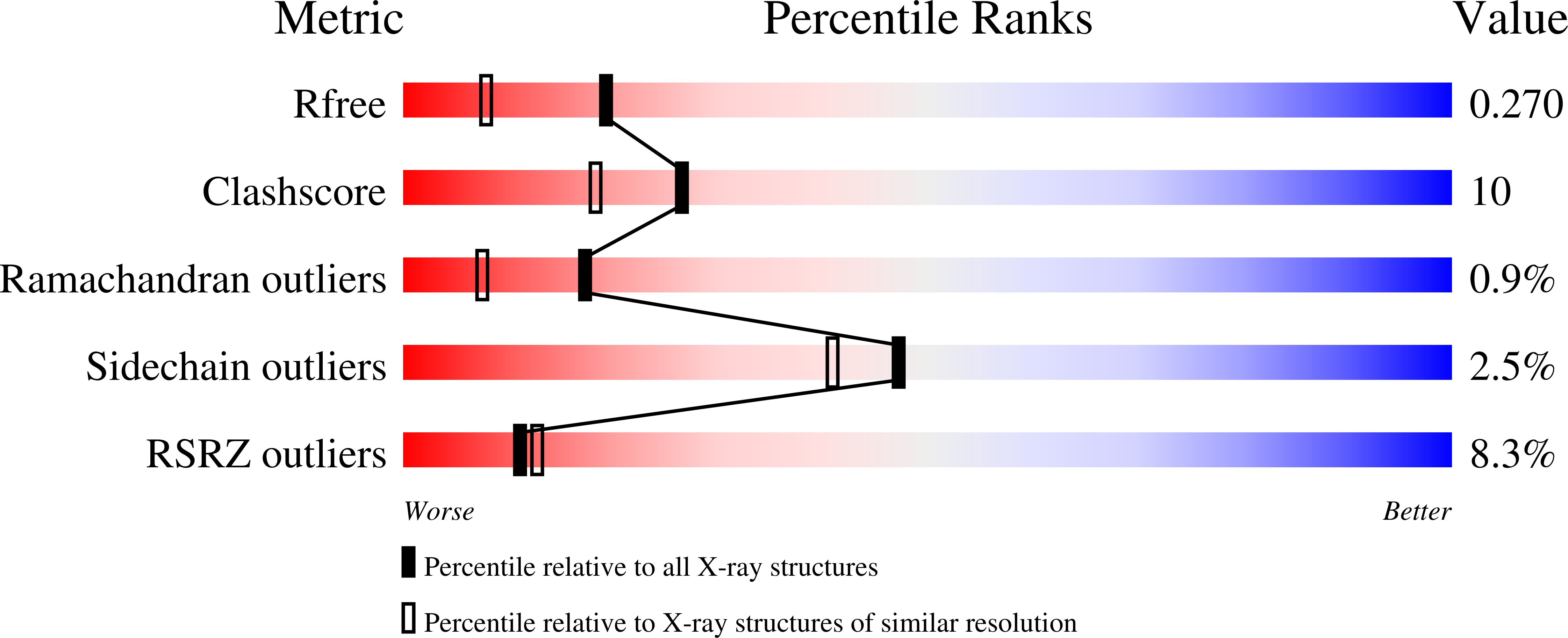Improvement of Physiochemical Properties of the Tetrahydroazepinoindole Series of Farnesoid X Receptor (FXR) Agonists: Beneficial Modulation of Lipids in Primates.
Lundquist, J.T., Harnish, D.C., Kim, C.Y., Mehlmann, J.F., Unwalla, R.J., Phipps, K.M., Crawley, M.L., Commons, T., Green, D.M., Xu, W., Hum, W.T., Eta, J.E., Feingold, I., Patel, V., Evans, M.J., Lai, K., Borges-Marcucci, L., Mahaney, P.E., Wrobel, J.E.(2010) J Med Chem 53: 1774-1787
- PubMed: 20095622
- DOI: https://doi.org/10.1021/jm901650u
- Primary Citation of Related Structures:
3L1B - PubMed Abstract:
In an effort to develop orally active farnesoid X receptor (FXR) agonists, a series of tetrahydroazepinoindoles with appended solubilizing amine functionalities were synthesized. The crystal structure of the previously disclosed FXR agonist, 1 (FXR-450), aided in the design of compounds with tethered solubilizing functionalities designed to reach the solvent cavity around the hFXR receptor. These compounds were soluble in 0.5% methylcellulose/2% Tween-80 in water (MC/T) for oral administration. In vitro and in vivo optimization led to the identification of 14dd and 14cc, which in a dose-dependent fashion regulated low density lipoprotein cholesterol (LDLc) in low density lipoprotein receptor knockout (LDLR(-/-)) mice. Compound 14cc was dosed in female rhesus monkeys for 4 weeks at 60 mg/kg daily in MC/T vehicle. After 7 days, triglyceride (TG) levels and very low density lipoprotein cholesterol (VLDLc) levels were significantly decreased and LDLc was decreased 63%. These data are the first to demonstrate the dramatic lowering of serum LDLc levels by a FXR agonist in primates and supports the potential utility of 14cc in treating dyslipidemia in humans beyond just TG lowering.
Organizational Affiliation:
Department of Chemical Sciences, Wyeth Research, 500 Arcola Road, Collegeville, Pennsylvania 19426, USA. lundquj@wyeth.com















